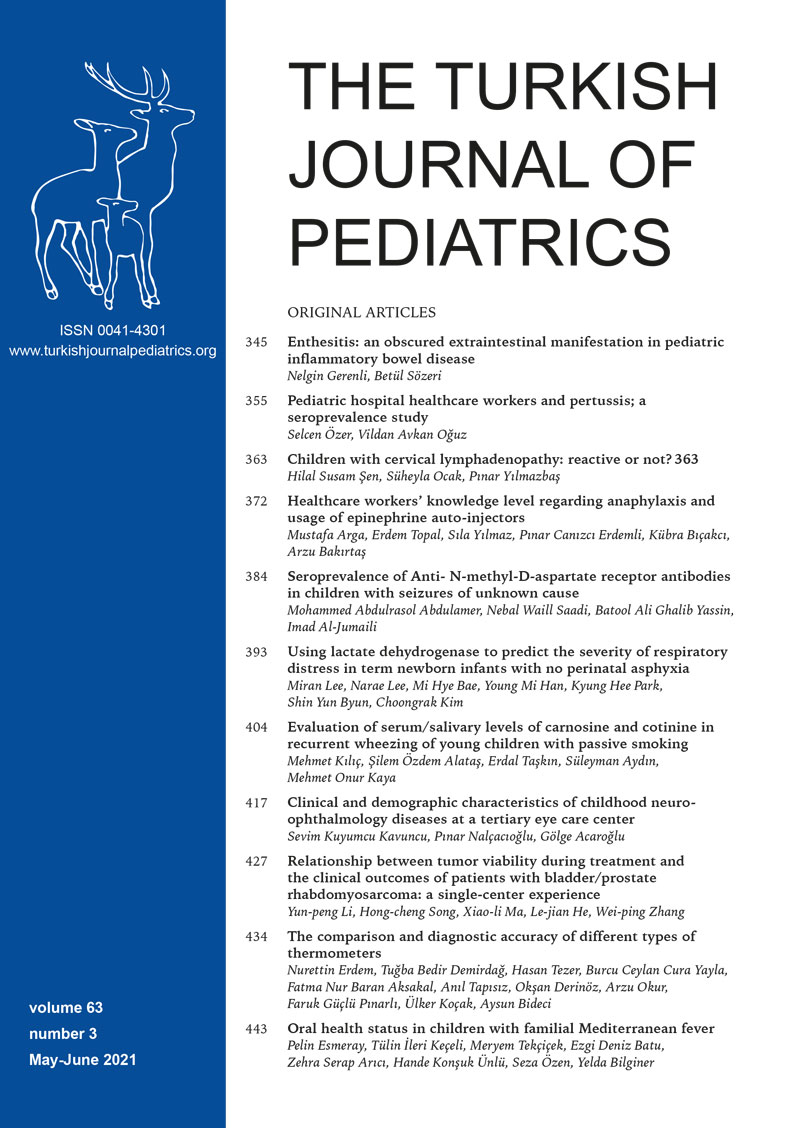Abstract
Background. Anti- N-methyl-D-aspartate receptor (NMDAR) antibodies were found most probably to be accompanied by seizures, particularly in children and sometimes it may be the sole presenting feature. Therefore, testing these antibodies in children with seizure of unexplained cause might be helpful to identify the spectrum of these antibody-mediated disorders. The objective of this study was to determine the frequency of anti-NMDAR antibodies in patients who presented with seizures of unknown cause.
Methods. A case-control study was conducted in two hospitals in Medical City Complex-Baghdad in 2019. Children aged 2-18 years who manifested seizures solely without identified causes were recruited over a period of ten months, with an additional sex- and age-matched control group (forty children in each group). Serum was tested in both groups for anti-NMDAR antibodies.
Results. In the study group, males predominated in ages younger than 5 years. The mean age was 6.6 years and the mean duration since their seizures` onset was 2 months. In contrast to male patients, female patients manifested more focal seizures. Only 5 patients (12.5%) were positive for Anti- NMDAR antibodies, in contrast to no one in the control group. Significantly, most of the seropositive patients were females (4, 80%) and showed focal types of seizures (4, 80%).
Conclusions. This is a preliminary epidemiological study about the prevalence of anti-NMDAR antibodies in a sample of pediatric patients with isolated seizures of unknown cause. Anti-NMDAR antibodies were found to be prevalent in a relatively small proportion of children who presented with seizures of unknown causes. Demographic characteristics of the patients with variable testing status were found to be nearly comparable to the results from other related studies.
Keywords: anti-NMDAR, autoimmune, children, seizures
Copyright and license
Copyright © 2021 The Author(s). This is an open access article distributed under the Creative Commons Attribution License (CC BY), which permits unrestricted use, distribution, and reproduction in any medium or format, provided the original work is properly cited.














